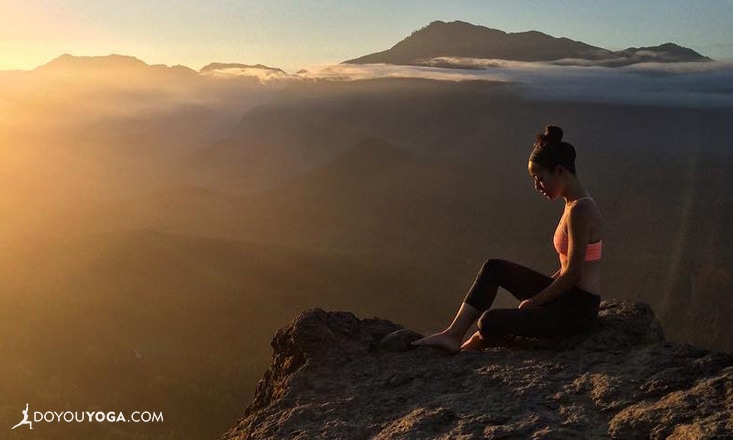The word pranayama consists of two parts—‘prana,’ meaning ‘breath’ (or ‘the energy that sustains the body’), and ‘ayama,’ meaning ‘to extend or draw out.’ The two come together to essentially mean ‘control over the breath.’ The most basic part of yoga—the first, most important building block—is the breath. We breathe in for extending motions, out for compressing motions, and we let our breath be the internal energetic manifestation of our outward physical movements. The two together create focus and calm, but the effects of pranayama are not just psychological. Several studies have looked into the physiological benefits of yogic breath practice, and they have overwhelmingly found that the simple act of mindful breathing can significantly lower blood pressure.
Breathing and Stress
But this is not the only benefit of controlled breathing exercises. A recent study published in the Journal of Complementary and Alternative Medicine studied a group of human subjects who performed rhythmic breathing exercises for twenty minutes. The saliva of all participants was then tested for biomolecules that indicate the presence in the body of stress and inflammation, as these molecules are easily detectable in saliva. The researchers measured the amount of molecules present before, during and after the exercises and found that, compared with a control group that did not practice the breathing exercises, the saliva of the group practicing relaxing breathing techniques contained significantly fewer stress- and inflammation-indicating molecules.
This study, and others like it, represents an increasing interest in scientifically substantiating the long unofficially recognized benefits of yoga. Measuring the effects that breath and meditation can tangibly, physically have on your body is an exciting frontier, and may lead us to a future in which yoga, breathing and mindfulness could be prescribed by your doctor to improve health.
Experiment
To conduct your own at home experiment, see if you can feel a decrease in stress and inflammation after a breathing exercise like the following:
One
Find a comfortable seated position, potentially with your back against a wall for support, and feel your spine lengthen as you reach the crown of your head up toward the ceiling. Feel your sit bones ground into the earth below you and draw your shoulder blades down the length of your back to put lots of space between your earlobes and the tops of your shoulders. At the same time, drawing your shoulders down your back will open up your heart center, letting you expand more through your chest.
Two
As you feel yourself relax into this posture and feel open and tall through your chest and abdomen, start to draw your breath in. Begin at the base of your nostrils, feeling the air draw in through your nose and down your throat, allowing the air to expand to the back of your throat, then the upper chest, the diaphragm, and the whole chest cavity. Be aware of how the breath makes your body feel, how you may feel like your brain and muscles are getting more oxygen than they have all day with this first nice, deep breath.
Three
At the top of your breath, stay aware of keeping your shoulders back and down, and start to release your breath slowly and with control. Picture the air at the bottom of your belly leave first, then back up through the diaphragm, the back of the throat, and out through the mouth or nose (your choice).
Four
Try counting the length of your inhale and then matching your exhale to that same length. For example, if you’ve counted to five on the inhale, try to count to five on the exhale as well. To add even more control and concentration, try to pause for a moment or two at the end of your exhale before starting a new inhale.
You can use counting, you can choose to say or sing a random syllable or an ‘om’ on the exhale, or you can choose to make no sound and simply recite a mantra to yourself as you breathe. This can be a simple, single word such as ‘grace’ or ‘peace,’ or you can choose a more intricate self-guided meditation passage. This is one of my personal favorites:
I breathe in light and kindness, I breathe out love and grace. I breathe in courage and joy, I breathe out acceptance and peace.”
Image credit: Angella Shin


